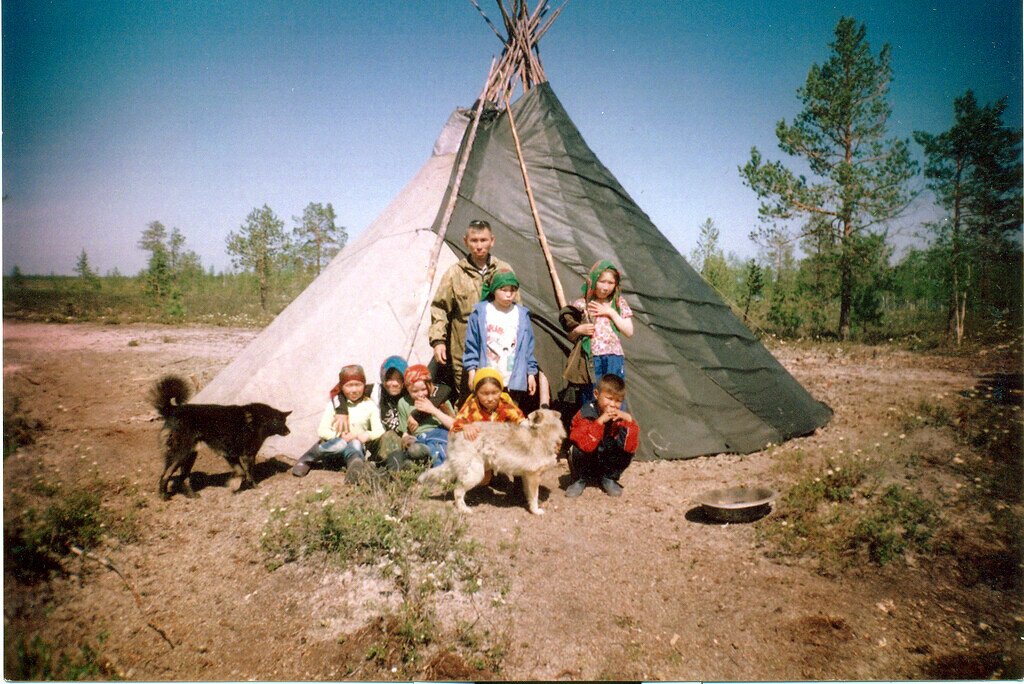Klavdia Smola is Professor and Chair of Slavic Literatures at the Technische Universität Dresden. Her most recent book, Reinventing Tradition: Russian-Jewish Literature between Soviet Underground and Post-Soviet Deconstruction, is out now with Academic Studies Press.
A version of the below post appeared under the same title in the Winter 2022 issue of The Slavic Review.
The native peoples of the Eurasian North—the Evenks, Nanai, Khanty, Nenets, Chukchi, Koryak or Eskimos—became objects of assimilation, extermination, and the creation of a written culture from scratch in the early Soviet era. Their small numbers and remoteness from the cultural metropolises, in addition to their still strong ties to ancestral traditions, make their literary production a particularly controversial example of modernization and (post)colonial dependencies in the former Soviet Union. Lacking a pre-Soviet written literary tradition, these “young” literatures were born as a symbiosis of folklore, local beliefs, syncretic Indigenous-Christian customs, and the surrogate literary tradition of the Russian center: the Soviet “master plot.”
Despite a short prehistory in the 1930s and 1940s, the minor North-Asian Soviet literatures were basically a product of the Thaw: the more typical, numerous, and best-known authors— such as Eremei Aipin, Iuvan Shestalov, Alitet Nemtushkin or Anna Nerkagi—were those that started to be published in the latter half of the 1950s and the 1960s. The North first came into Soviet literature as a kind of “younger student.” That is, the first generations of “Northern” authors had already engaged in individualization and self-reflection, but still, metaphorically speaking, dressed in the clothing and spoke the language of their “teacher,” the mainstream Soviet writer.
In practice, this meant that the first writers of the Soviet North sought to transpose Soviet modernity onto local folklore. At the same time, in the spirit of Russian village prose, these authors reflected on this transposition, emphasizing the clash of cultures that had taken place in the recent past or was still ongoing. Thus, practically from the very beginning, the Northern Indigenous literatures reflected the identity crisis characteristic of more than a few of the authors, narrators, and characters of late Socialist Realism.
The motifs and poetics of displacement, as well as fluctuations between the two worlds—the “ethnic” and the socialist—was an implied, performative memory of early Soviet deportations and the violence of Soviet acculturation. These were writers whose parents or grandparents spoke only the local languages and were shamans, hunters, and fishermen, but who themselves studied in boarding schools and later in institutions of higher education in the capitals, or in regional cities. With the consciousness of a few enlightened individuals within their respective small cultures who feared its erasure, they not only created a bilingual literature, but also collected the folklore of their peoples, defended dissertations on their cultures, and carried out field studies. The works of these “(auto)ethnographers” combined national myths with cultural translation and historiography.
The Sovietization of indigenous Siberia was not only inscribed into the very texture of prose, but was also an object of representation and analysis. History, which had until recently still been equated with Soviet history, was becoming the topic of differing appraisals, fictive memories, and tropes of alienation. Meanwhile, the landmarks of modernization—the creation of an alphabet, the elimination of illiteracy, the introduction of hygiene and technology, instruction in schools and institutions of higher educational —are frequently portrayed as the convocation and sometimes collision of two disparate types of culture: the written and the oral, the secular-educated and the religious, the “alien” (good, but not always) and the “native” (the intimate or the “backward,” and sometimes both).
The reception of Socialist Realism in the ethnic North displayed many characteristics of so-called hyphenated literatures, which have been actively studied in recent decades on the examples of minoritarian and postcolonial texts in America, Spain, or France. These features include stylistic and genre hybridity, biculturism, and sometimes techniques of covert resistance or compromise—in a word, performative evidence of cultural coexistence with the Russian-Soviet mainstream. In addition, these literatures exemplified the appropriation of what studies of empires and colonialism—which, starting in the 1990s, included Sovietology—call multiple or alternative modernities.
When perestroika began, Soviet history could finally be analyzed as a process of linguistic and cultural translation. It also became the subject of partial revision, invective—as a sign of de-Stalinization—and even of the idea of an Indigenous North that had been colonized. Equipped with ethnographic knowledge and an ethics of equality, and having learned to see their own people from without, Northern authors—much like the exponents of postcolonial literatures on other continents—already possessed an instrument for a post-imperial “writing back” that soon became possible. By the late 1980s, texts began to appear that openly portrayed the ecological catastrophe of Siberia, the forced resettlements of minorities, and the extermination of entire ethnicities in the process of Sovietization.



